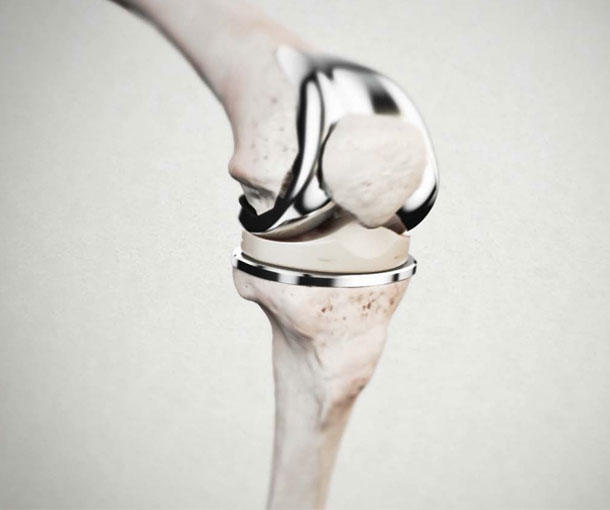Knee Replacement
What exactly is knee replacement surgery?
Total knee replacement is a significant procedure in which artificial implants or prostheses are used to replace the damaged components of the knee joint. The injured part is shaved (resurfaced) and restored with implants using specialist equipment. The prosthetic knee thus implanted provides near-normal joint function. For all age groups and reasons, the implant may be used for up to 15 years. Knee replacement surgery is generally safe, with a success rate of about 97 percent after a 12-year follow-up.
What conditions require knee replacement?
Individuals suffering from any of the following medical disorders may be candidates for knee replacement surgery:
- Knee joint arthritis is severe.
- Pain that interferes with regular activities and personal care
- Leg malformation that is severe (bent or bowlegs)
- Arthritis caused by knee joint injuries
- Rheumatoid arthritis
- Long-Standing knee pain & swelling
TOTAL KNEE REPLACEMENT
Total knee replacement, also known as ‘Arthroplasty,’ is the replacement of the joint (bone end surfaces) with artificial parts known as prostheses. The prosthetic knee is made up of three parts.
- The femoral (thigh) component is constructed of metal and covers the thigh bone’s end.
- The upper end of the Tibia is covered by the Tibial (shin bone) component, which is made of metal and UHMWPE (medical-grade plastic).
- The patella or kneecap, the third component, is constructed of polythene. The surgeon selects whether or not to replace it in a given condition during the procedure.
- After a complete medical assessment, patients with severe arthritis in both knees may be given joint replacements for both knees. Computer aid is also used in joint replacement, which enhances implant alignment and surgical accuracy. Orthopedics evaluates the medical history, does a physical examination, X-rays, and other tests such as MRI and blood tests before performing complete knee replacement surgery. The doctor then evaluates the findings and talks with the patient if complete knee replacement surgery is the best choice for improving function and relieving pain in their circumstance.
UNICONDYLAR KNEE REPLACEMENT
Only one half of the knee joint is worn out in certain people. Only one side of the knee is replaced in these cases. Unicondylar Knee Replacement is the medical term for this procedure. It is possible in some circumstances, which only the surgeon can determine and advise on. This surgery is quite inexpensive, and since the procedure is less comprehensive, the post-operative recovery is quicker.
What to Expect After a Knee Replacement Surgery
Following surgery, the patient is sent to the post-operative observation room. A bandage is put around the knee, with a drain tube flowing out of it. This eliminates any blood that has accumulated in the knee and reduces the risk of infection.
An intravenous line is used to deliver blood or fluids to a patient’s arm. This is then utilized to deliver antibiotics and transfuse blood over the following several days. A urinary catheter may be used to assist elderly people or those who have urinary problems in certain cases. Some leads are connected to the body in order to continually monitor the ECG, blood pressure, pulse rate, breathing rate, and other parameters. Patients are transferred to their respective rooms the next day after the surgery.
Physiotherapy and Post-Operative Care
- Within 24 hours following the procedure, patients are recommended to begin in-bed exercises.
- The drain from the knee joint is removed after 24-48 hours, and the dressing is reduced in size. Patients are asked to sit at the bedside, with their legs supported.
- Patients are advised to stand and walk using a walker 2-3 days following the procedure, and a day or two later, they may use the restroom with help using a high seat.
- Two weeks following the procedure, the stitches are removed.
Patients are urged to walk with a walking stick three weeks following surgery. - Patients are instructed to climb stairs 4-6 weeks following surgery.
Five days following surgery, patients are discharged from the hospital with instructions on medications and rehabilitation. - It is not recommended to squat or sit cross-legged following the procedure, especially on the floor.
- The postoperative schedule gets slightly extended in case of surgery being performed on both knees.
A successful Total Knee Replacement usually lasts around 15 years. It may, however, differ depending on the circumstances.

